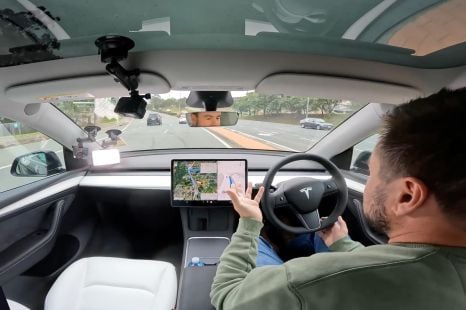

William Stopford
Tesla switches on FSD Supervised in Australia, announces subscription pricing
3 Hours Ago
Mazda’s first-ever electric vehicle is the quirky MX-30 crossover – which isn’t confirmed for Australia, yet. What are we missing out on?
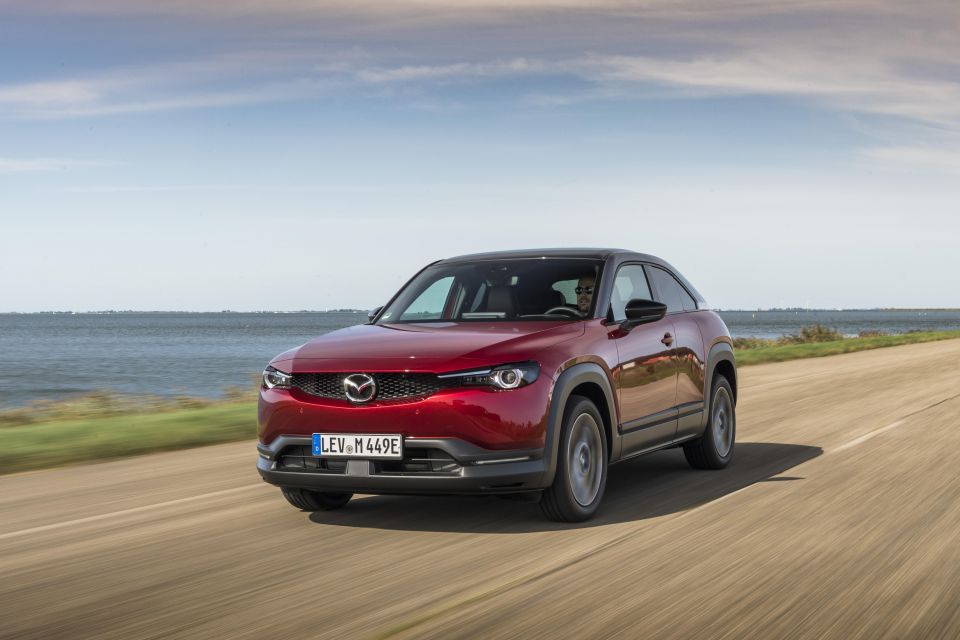


Contributor
New from
$33,990
excl. on-roads

Contributor
New from
$33,990
excl. on-roads


Contributor
New from
$33,990
excl. on-roads

Contributor
New from
$33,990
excl. on-roads
Quickly see how this car stacks up against its competition. Select any benchmark to see more details.
Where expert car reviews meet expert car buying – CarExpert gives you trusted advice, personalised service and real savings on your next new car.
It’d be easy to be confused by the Mazda MX-30, seeing as it seems to take its name from quite different parts of the Japanese company’s history.
As a prefix, MX has long been used for the marque’s sporty cars, such as the long-serving and top-selling MX-5 roadster, while the construction of the alphanumeric badging for this new model also makes it sound as if it is closely affiliated to the CX-30 crossover. So, which is it most like – an MX, or a CX?
Neither of them, strictly speaking. The MX-30 is Mazda’s brave launch into the world of electric vehicles (EV). So while it is a crossover, it’s not just a CX-30 with its internal-combustion innards taken out and replaced with an electric motor plus lithium-ion battery pack.
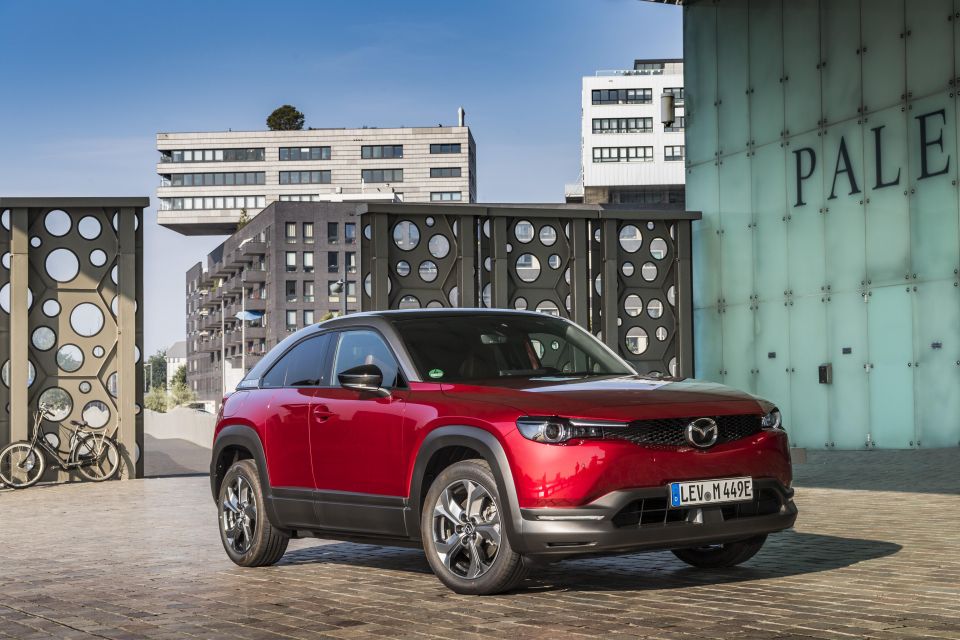
Instead, the MX-30 has its own, bespoke body shell, complete with a pair of rear-hinged back doors that hark back to the RX-8 rotary sports coupe.
Mazda’s been canny combining electric power with a crossover form, though, because both types of vehicle are in huge demand in an increasingly eco-conscious, image-obsessed world.
Of course, Mazda isn’t the first manufacturer to spot the money-making potential of dropping a zero-emissions drivetrain into a compact, SUV-like body.
Can our first drive in a pre-production example of the MX-30 convince us the company was right to take its time in getting around to making an EV, or is it simply a very late entrant to the party that’s in danger of getting overlooked?
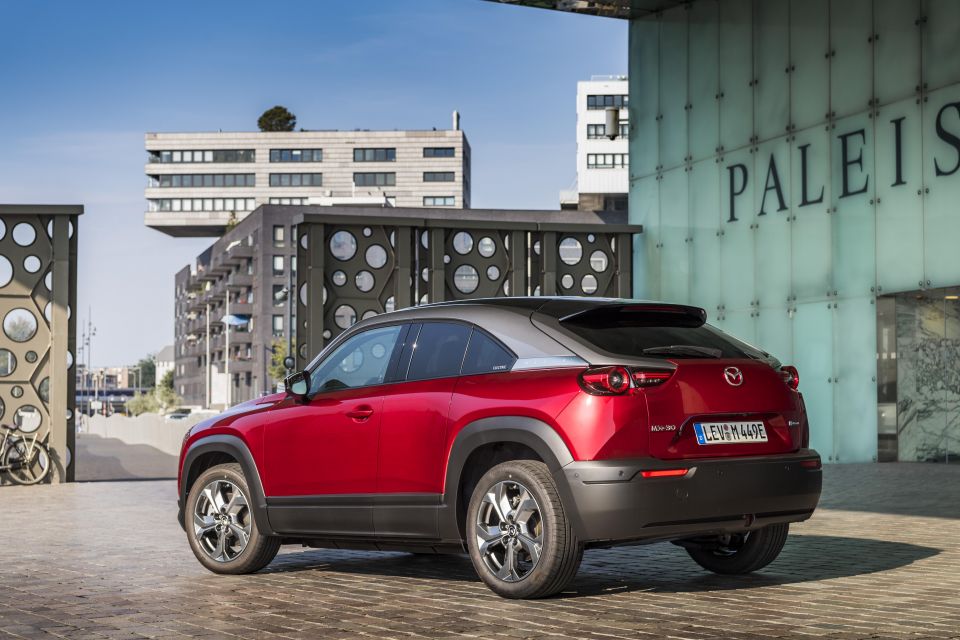
We still don’t know the details on this, because Mazda Australia has only said it will ‘make a decision on the MX-30’ before 2020 is out.
Whether we’ll only get the pure EV here, the hybrid model confirmed for Japan, or the range-extender EV with an onboard rotary engine (or any combination of these models) remains to be seen. As an indicator, rival models like the BMW i3 and Hyundai Kona Electric are typically in the $64,000-$70,000 ballpark – so not cheap.
The hope is that, if it’s confirmed for sale here in pure-EV form, the Mazda could be less expensive than this for a reason we shall come onto…
Buy your new car without the stress. It's fast, simple and completely free.

Great service from Travis and team, second time I have used this business would not hesitate to recommend them to anyone
Craig C.
Purchased a Ford Ranger in Sunshine Coast, QLD
CarExpert helped Craig save $7,224 on his Ford Ranger, now let us save you on your next new car.
Get your BEST priceWith the car not yet confirmed for our shores, we can’t give you any concrete details on the MX-30’s spec list, nor what model grades we might get.
We can say Mazda is not usually known for skimping on the kit, so it would be reasonable to assume that our pre-production test car’s roster of 18-inch alloy wheels, LED headlights, parking sensors with a reversing camera, auto lights and wipers, a leather-wrapped steering wheel and shift lever, a windscreen-projected head-up display, radar cruise control, Apple CarPlay and Android Auto connectivity, and 60:40 split rear seats – among more – all ought to be part of the standard package.
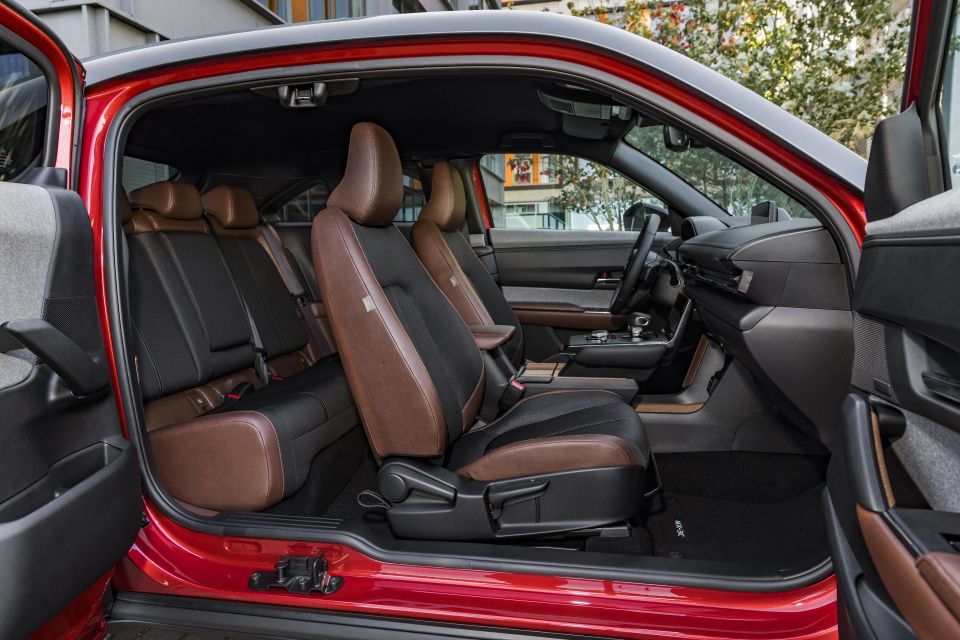
Options could include powered and heated seats, keyless entry and go, adaptive LED headlights, and a powerful Bose uprated sound system, but this is mainly conjecture at this stage.
Again, we’re in the dark on this one for the moment – there is no ANCAP safety rating for the Mazda MX-30 nor a Euro NCAP report to look up for guidance.
But once more extrapolating from the company’s preference for fitting lots of standard equipment, be that comfort- or safety-oriented, the MX-30 should have access to advanced items like a 360-degree camera, driver monitoring, cruising traffic support, front cross-traffic alert, and smart brake support with both rear and rear cross-traffic functions.
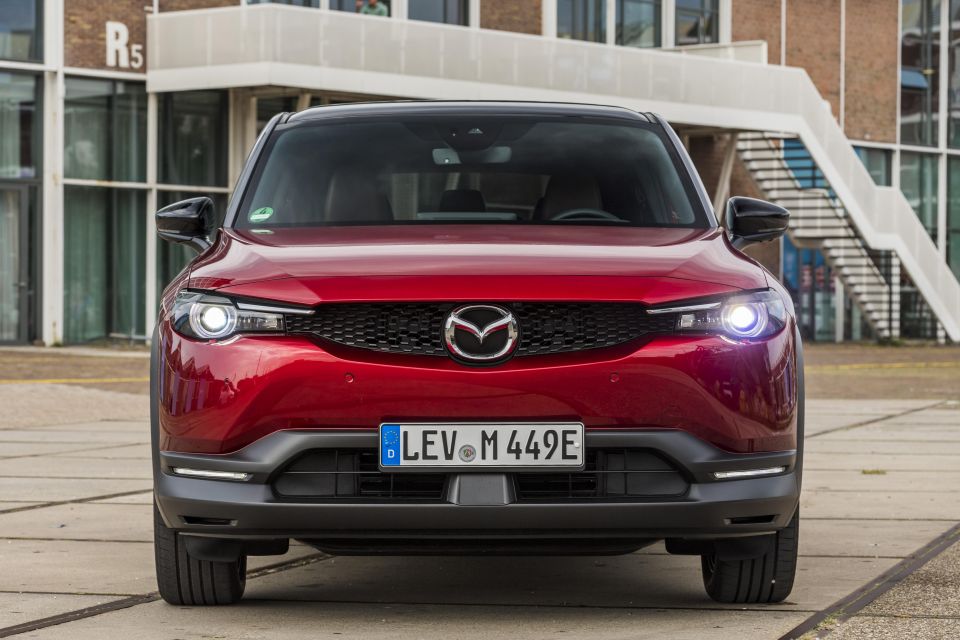
Standard kit should run to a Driver Attention Alert, Front Smart Brake Support with Pedestrian Detection, Emergency Lane-Keeping with Blind-Spot Assist, a Lane Departure Warning System, Hill-Hold Assist and a tyre-pressure monitoring system.
Seven airbags are fitted to the MX-30’s cabin, while its unusual structure – the four doors that meet in the middle means there is no structural B-pillar in the Mazda EV – has necessitated the company develop reinforcing ring structures in the crossover’s body-in-white.
These should ensure the Mazda has plenty of structural rigidity in the event of an accident.
Swing open the front doors, unlatch those diminutive and idiosyncratic ‘suicide’ rears, and you are greeted with a large aperture that allows you to clamber into the Mazda’s cabin easily.
If you’re of a more robust form, trying to slide into the second row of seats through the gap afforded between the back of the front seat and the mounting point of the rear door will be tricky, but smaller folk (kids) should be fine clambering aboard the MX-30.
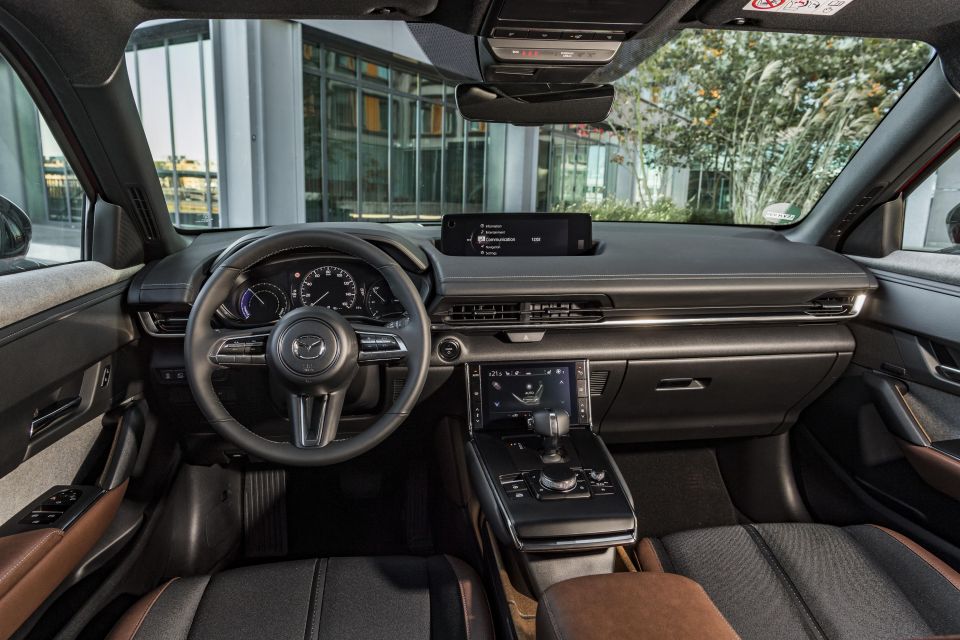
It’s therefore a clever piece of packaging, considering its physical size means the EV crossover is less than 4.4 metres long and 1.8 metres wide. Four people should be able to get comfortable in the MX-30 as the rear bench is reasonably accommodating, but the location of the battery pack in what would otherwise be the ‘transmission tunnel’ means the centre-rear seat will be occasional use only; there’s not much room for feet in the middle of the car.
Behind the passenger compartment sits a useful 366-litre boot, trimmed to 341L if the Bose sound system is specified as the sub sits in the cargo bay, and there are 60:40 split rear seats to increase the maximum loading capacity to 1171L.
It’s reasonably practical, which brings us to material finishing. The MX-30’s dash architecture is an odd mix of the daring and the conservative.
If you’ve sat in any contemporary Mazda, the 8.8-inch infotainment screen atop the centre stack will be familiar to you, as will the MZD Connect controller. However, that rotating dial is mounted higher in the MX-30 on a ‘floating’ console, beneath which is a large, concealed storage area – which is lined with cork.
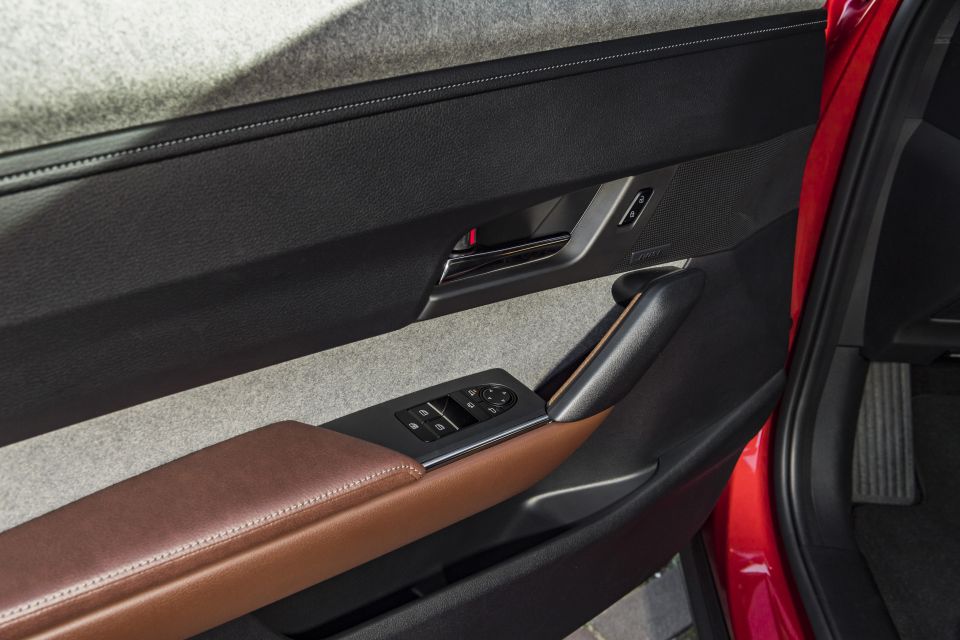
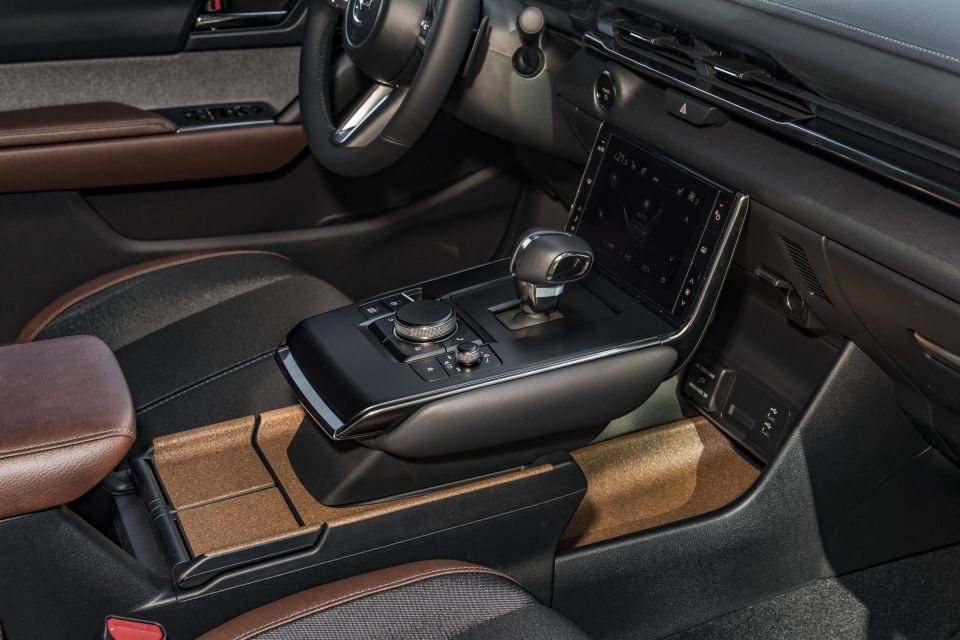
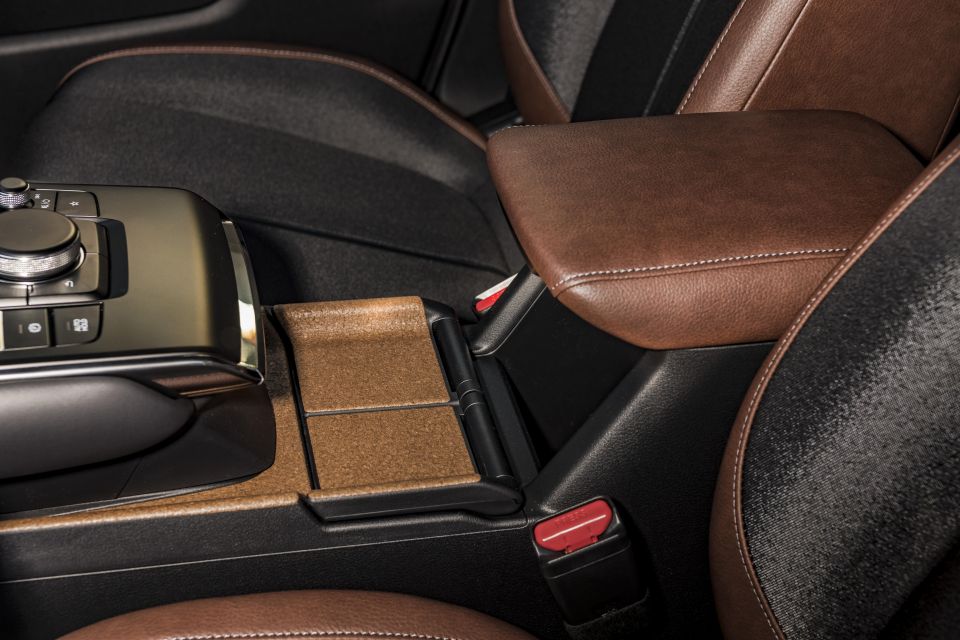
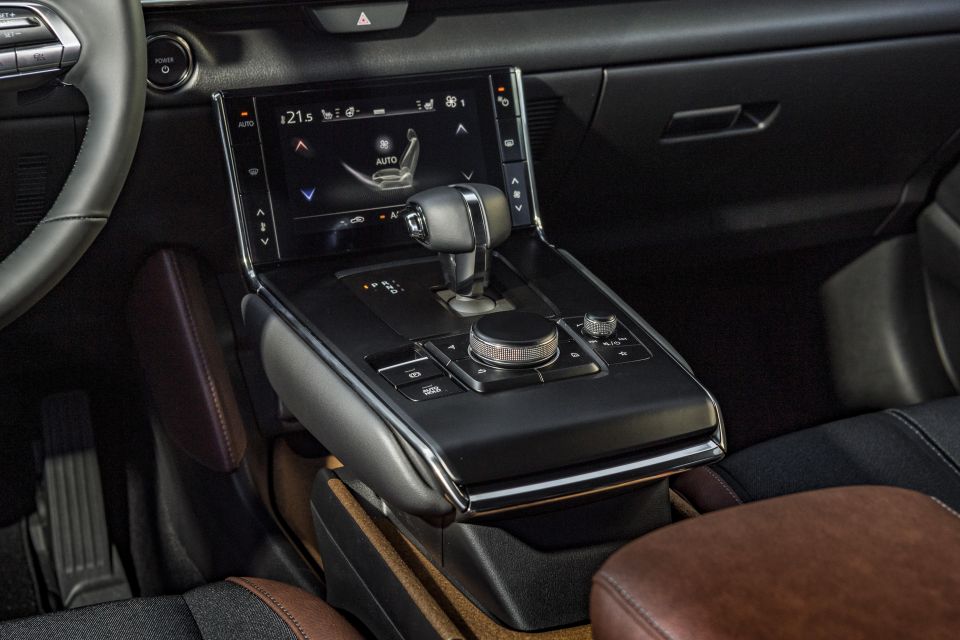
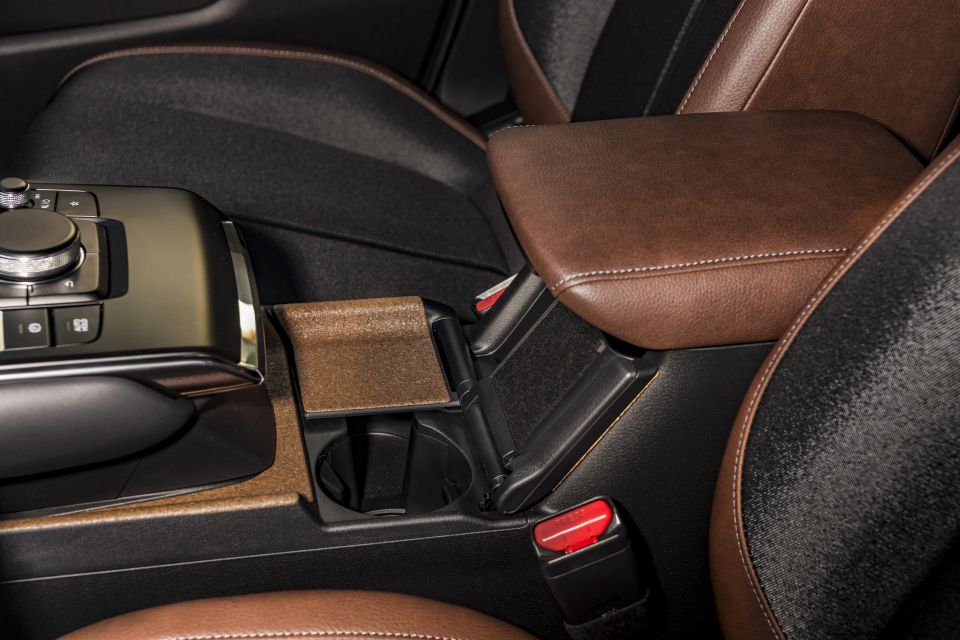
There are two reasons for this, one being that cork is a renewable material. The other? 2020 is Mazda’s centenary and the company began in 1920 as the Toyo Cork Kogyo Co. Ltd.
There’s more cork behind the drive lever area, but neat homages to its parent company’s industrial past are not the only ecological flourishes in the cabin of the MX-30. The seats are made of vegan-friendly leatherette, for instance, while the door cards are clothed in 100 per cent recycled PET material. It’s all very worthy.
This planet-saving posturing is all well and good, of course, but the overall cabin ambience lacks flair.
The MX-30 feels conventional within, despite an instrument cluster now featuring a larger digital display and even, in an Audi-like move, the inclusion of a secondary seven-inch touchscreen for the climate controls.
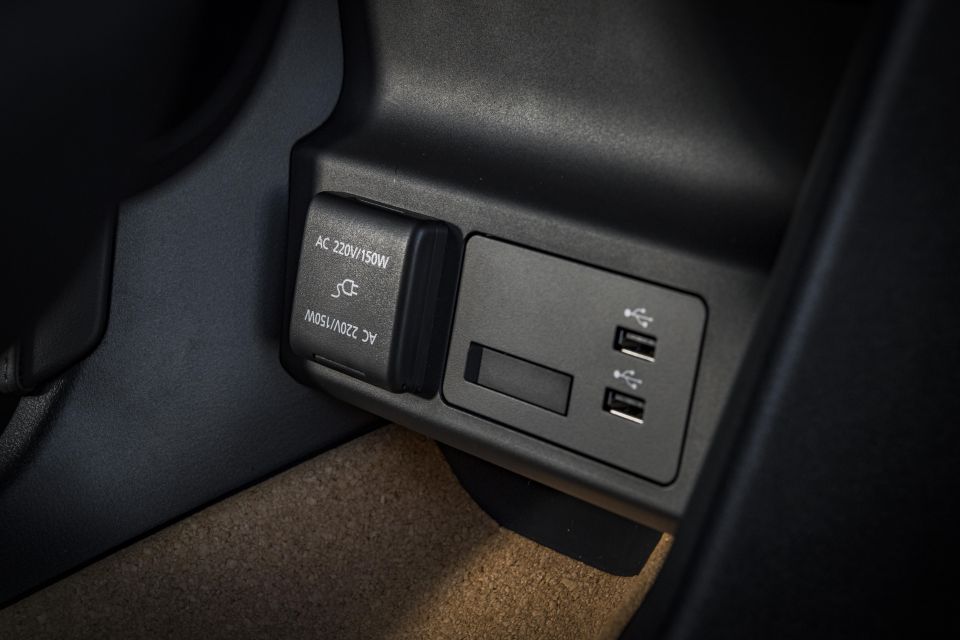
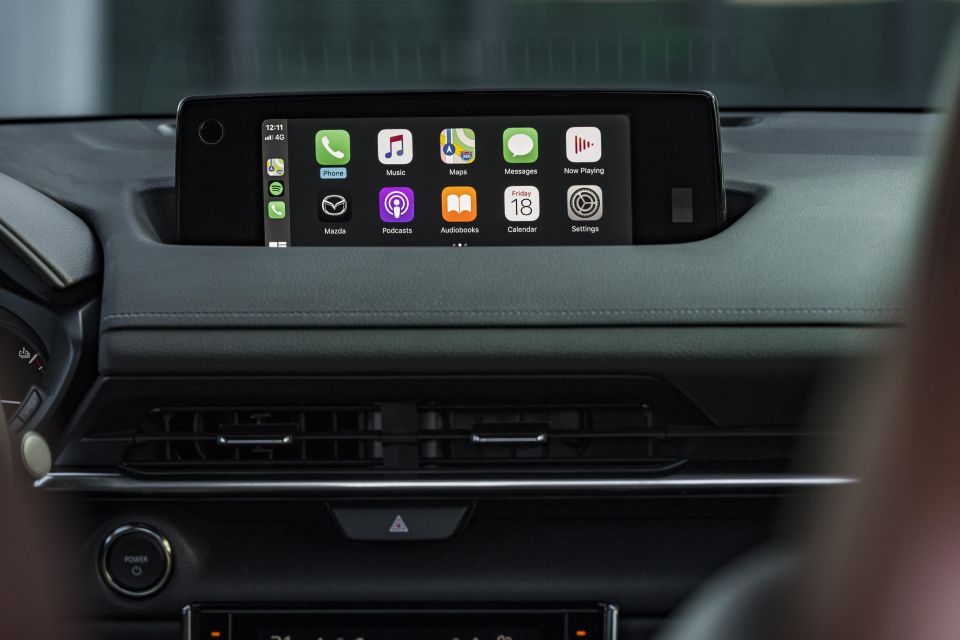
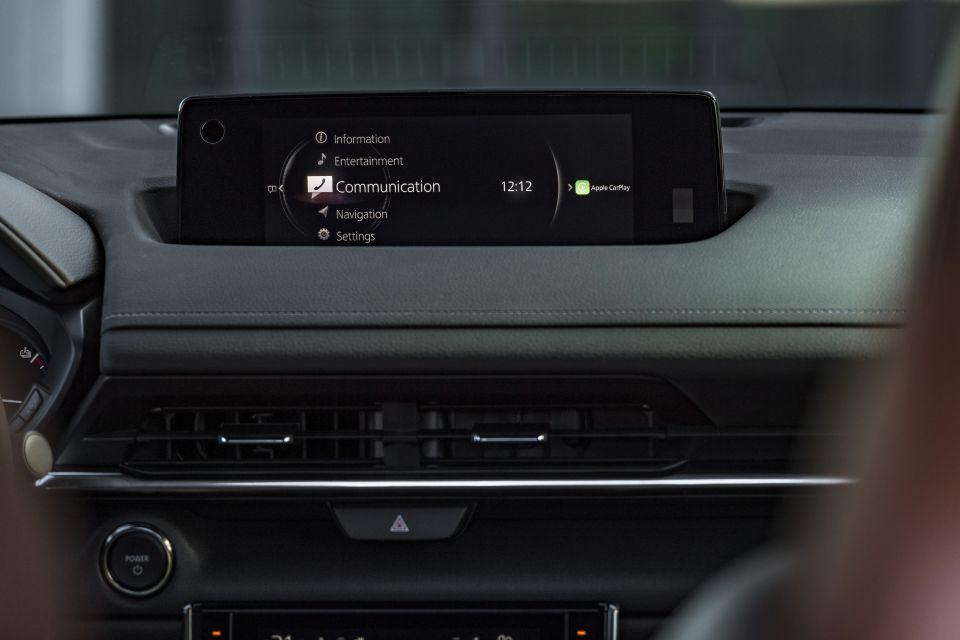
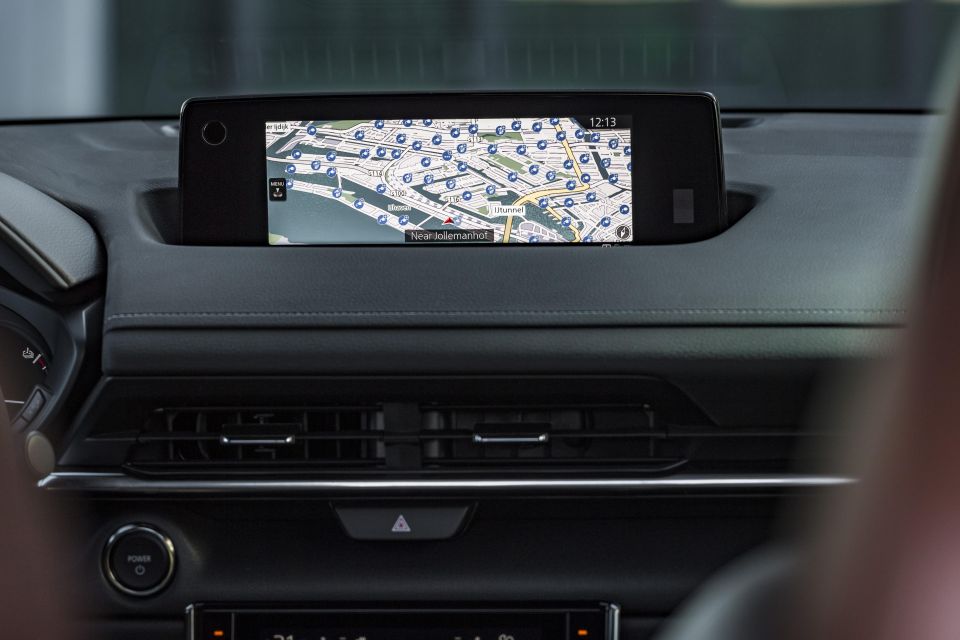

This works well but Mazda, covering all bases, has put six physical shortcut buttons down each side of this screen for key functions of the climate system. However, despite all the cork, the PET, the digital screens, and the floating central structures of the dash, this forward-thinking EV is not hugely dissimilar to the passenger compartment you’d find in a CX-30.
Mazda has elected to ‘right-size’ its lithium-ion battery pack for the MX-30 EV, a bold decision the company explained to us with a series of charts, graphs, and earnest presentations on why this is undoubtedly the correct thing to do.
The basis of Mazda’s decision is that a smaller lithium-ion battery is cheaper to produce, requires less of a carbon footprint to construct and to charge during the course of its life, and is lighter than a larger battery that would provide an EV with lots of outright range.
This, in turn, allows the MX-30 to be a more affordable, trimmer vehicle and one that has an earlier ‘break-even’ point for its lifetime CO footprint when compared to an equivalent internal-combustion car.
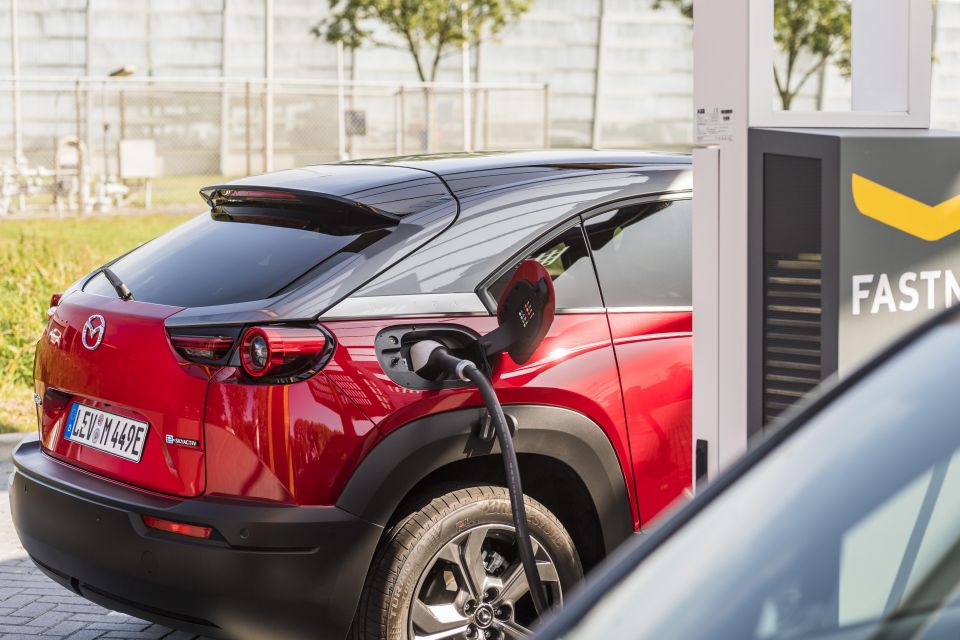

All very noble but the headline fact is this: the MX-30 will only go up to 200km on a single charge of its 35.5kWh battery. Even its city-driving range isn’t that impressive, with a 265km theoretical maximum.
Mazda has supposedly painstakingly researched this and found most commuters worldwide only travel 50km per day, so having a 500km range on a smaller EV like this simply isn’t necessary.
But it looks a risky move on the part of Mazda, especially when a Hyundai Kona Electric will go much further on a charge of its 64kWh power pack – and when so many people tempted to make the leap to EV propulsion will focus upon a vehicle’s maximum range before any other consideration.
Added to this is the fact Mazda has only equipped a modest 107kW motor, which delivers 271Nm at the front wheels though a single-speed reduction gear. That leads to a 0-100km/h dash that barely dips beneath the ten-second barrier at 9.7 seconds, with the top speed restricted to 140km/h.
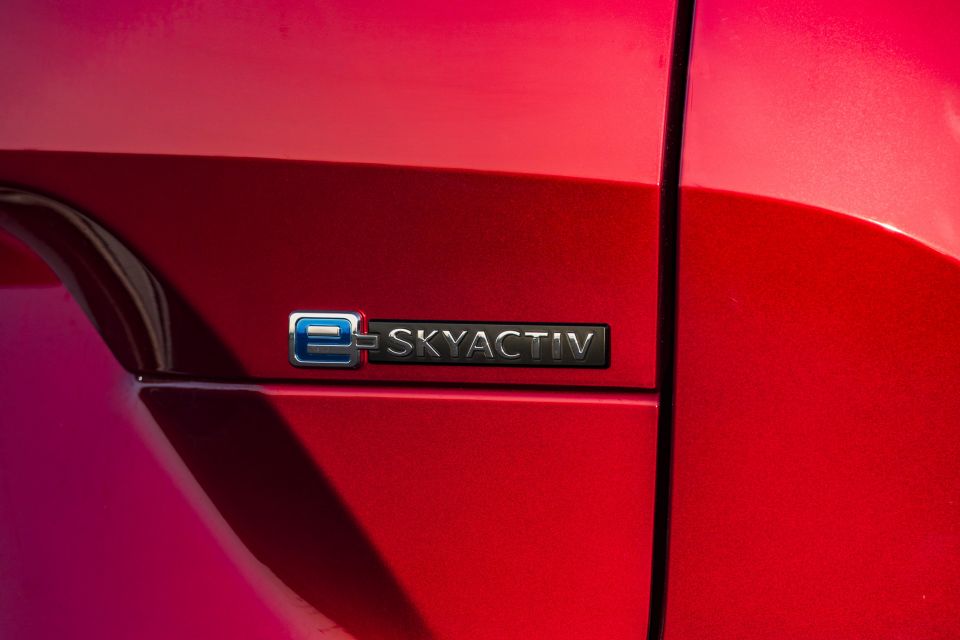
Its 19kWh/100km energy consumption is middling by EV standards.
On a 50kW connection, it’ll take 36 minutes to get the battery from 20-80 per cent capacity, while a 6.6kW domestic wallbox would re-juice the pack fully in five hours.
The Mazda’s undoubted strengths are its refinement and its handling. That right-sized battery talk starts to make sense, because – at 1635kg without a driver installed – the MX-30 is relatively light for an EV, and an EV crossover at that.
This means its handling is surprisingly crisp and agile. The MX-30 is capable of rapid direction changes without too much fuss and bother, while it resists understeer and significant body roll equally to an impressive degree. The steering’s also most pleasant, accurate and well-weighted, if not hugely informative.
It also capitalises magnificently upon its lack of a vibration-inducing engine to offer ride quality and noise suppression that are both uniformly excellent. Whether you’re driving around urban areas or on faster-flowing highways, the MX-30 is always dignified, always serene, always comfortable.
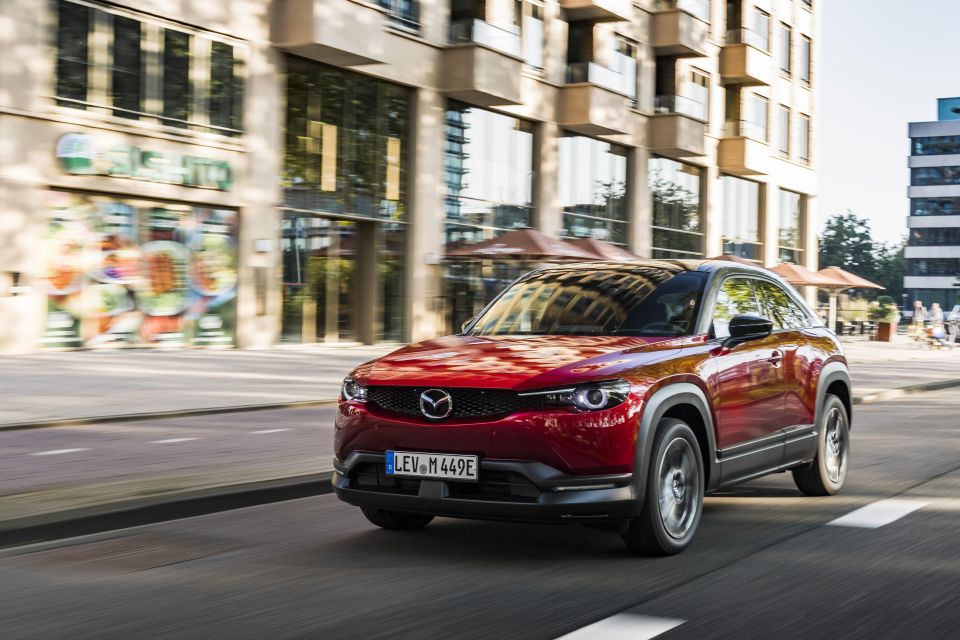
A fair amount of regenerative braking effect also means it can be driven competently using the throttle pedal alone if you know how to read the road ahead, and so as a short-range city-commuting conveyance it’s bang on brief.
But it all feels ever so safe. It’s composed in the corners but not thrilling to drive in the way some EVs, affordable or otherwise, can prove to be, and that pokey electric motor leads to underwhelming acceleration.
Even low-speed roll-on or even step-off acceleration in the MX-30 feels leisurely, with none of the ‘whoosh’ of instant torque that an EV usually provides.
Of course, electric cars don’t all need to be able to crack 300km/h or tick off the 0-100km/h run in sub-four seconds, we’re not saying that at all; but one of the key appeal factors of EVs is the way they scoot off the line in a seamless flow of silent power.
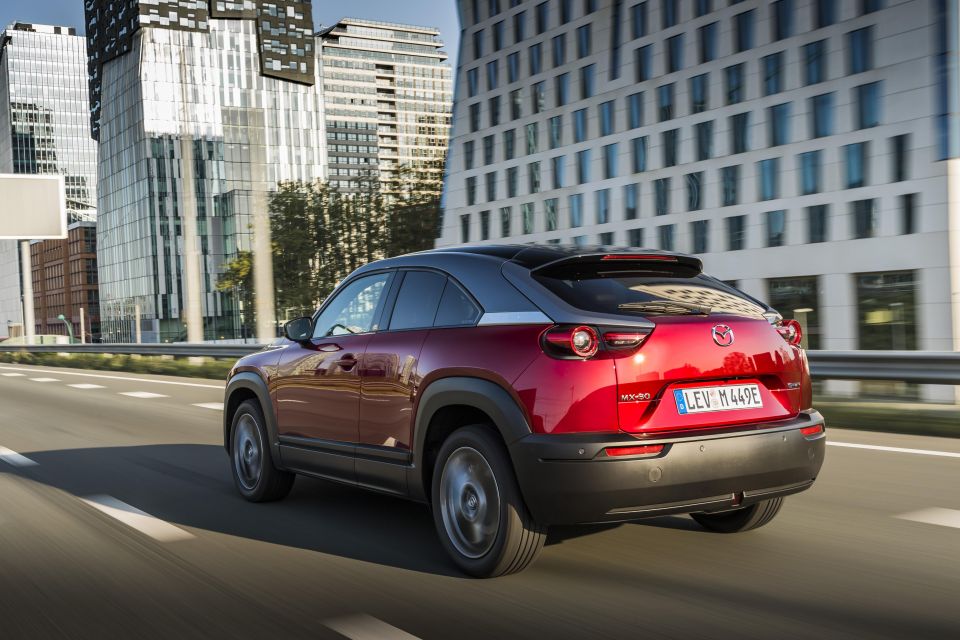
The Mazda never really delivers that sensation and so its driving experience is quietly proficient, rather than notably praiseworthy.
We’re still waiting for details in this regard, too. Mazda Australia’s five-year, unlimited-kilometre warranty would likely be brought to bear on the MX-30 if it lands here.
Buy your new car without the stress. It's fast, simple and completely free.

Great service from Travis and team, second time I have used this business would not hesitate to recommend them to anyone
Craig C.
Purchased a Ford Ranger in Sunshine Coast, QLD
CarExpert helped Craig save $7,224 on his Ford Ranger, now let us save you on your next new car.
Get your BEST priceAn intriguing proposition, the Mazda MX-30 competes in a more congested compact EV segment these days, although here in Australia electric car sales haven’t quite taken off in the same manner that they have in other corners of the world.
The enormous marketing gamble Mazda has taken with the MX-30 is only giving it a 200km range – and it’s clear the manufacturer isn’t totally convinced it has done the right thing in fitting a 35.5kWh battery.
As we’ve already said the MX-30 is offered as a petrol-electric hybrid in its native Japan and there’s a range-extender version on the way, complete with a tiny rotary engine to provide volts-on-the-go.
It’s not so much the range that bothers us most, though, but the fact the MX-30 doesn’t feel particularly standout in any regard. On the face of it, the Mazda looks like it’s going to deliver a distinctive EV ownership proposition with its bespoke body and funky doors, but it actually comes across as a touch staid and not massively exciting.
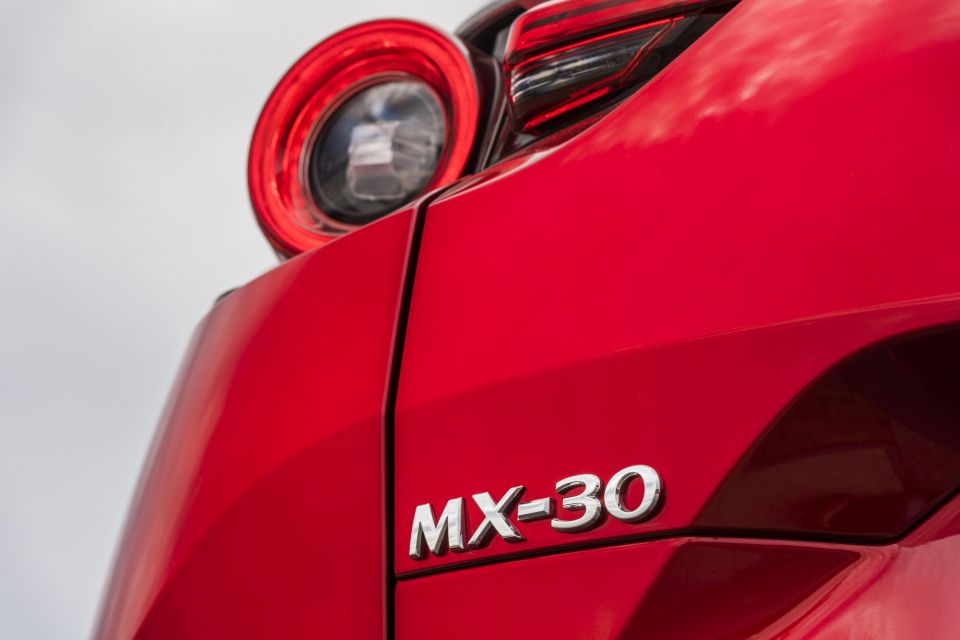
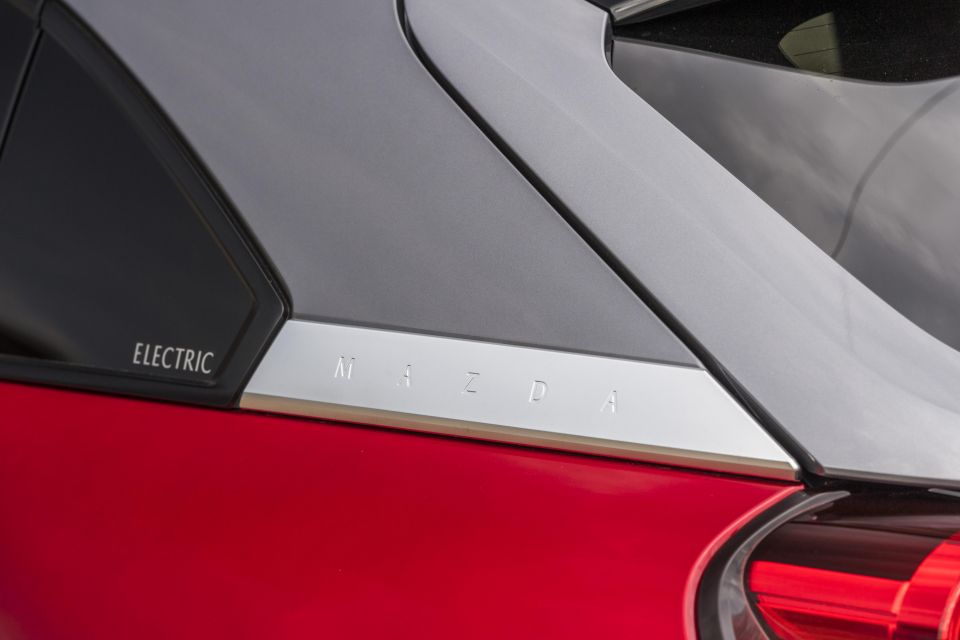

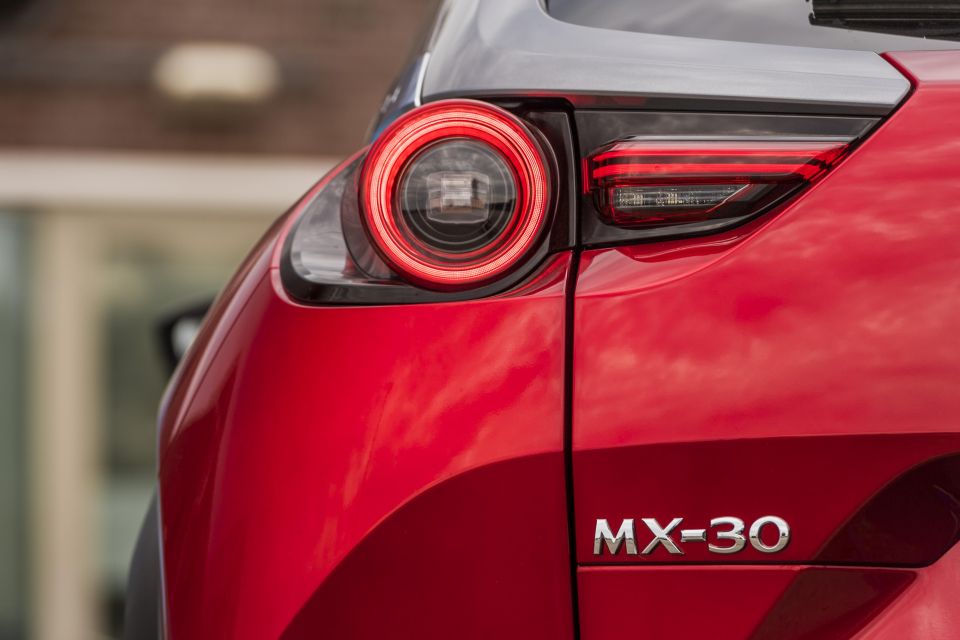
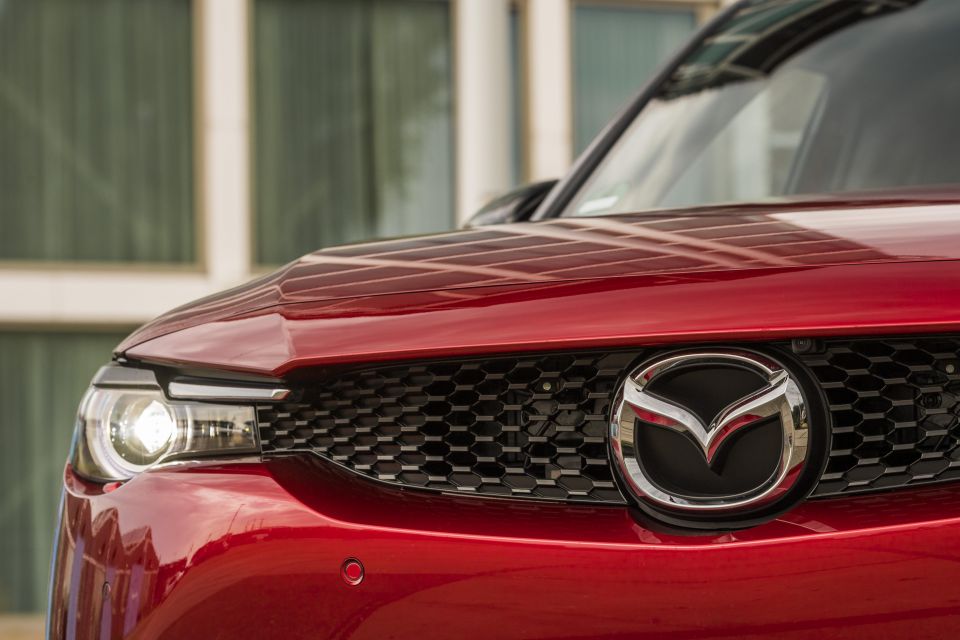
There are EVs in this sector of the market that offer more of a ‘wow’ factor like the Honda E city car, if that sort of thing bothers you.
But the MX-30 might hit back if it turns out to be significantly cheaper than other EV options here in Australia. Once we have confirmation of whether it will go on sale here or not, we can give you a better steer on the financials of owning the Mazda; and we’ll revisit the car accordingly if it’s going to make it to our country.
Until then, we have the suspicion we’re not missing out on anything truly ground-breaking unless you’ve always craved an EV crossover with suicide rear doors.
Where expert car reviews meet expert car buying – CarExpert gives you trusted advice, personalised service and real savings on your next new car.


William Stopford
3 Hours Ago
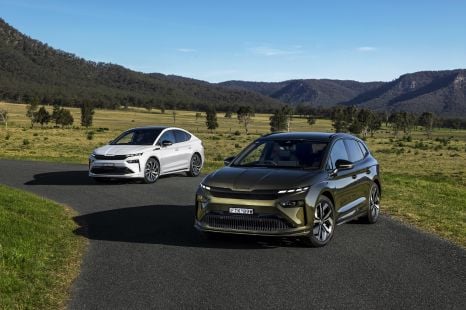

Max Davies
10 Hours Ago


Max Davies
10 Hours Ago


Ben Zachariah
11 Hours Ago


William Stopford
11 Hours Ago


James Wong
15 Hours Ago